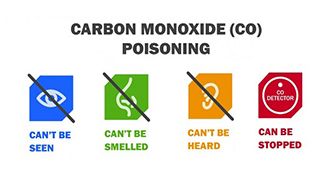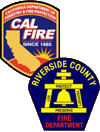CARBON MONOXIDE POISONING

Carbon Monoxide
Carbon monoxide is produced as a result of incomplete burning of carbon-containing fuels: Coal Wood Charcoal natural gas Fueld Oils
Carbon monoxide can be emitted by combustion sources such as not properly vented kerosene and gas space heaters, furnaces, woodstoves, gas stoves, fireplaces and water heaters, automobile exhaust from attached garages, barns, and sheds.
Problems can arise as a result of improper installation, maintenance, or inadequate ventilation. If appliances that burn fuel are maintained and used properly, the amount of CO produced is usually not hazardous. However, if appliances are not working properly or are used incorrectly, dangerous levels of CO can result.
Carbon monoxide interferes with the distribution of oxygen in the blood to the rest of the body. Depending on the amount inhaled, this gas can impede coordination, worsen cardiovascular conditions, and produce fatigue, headache, weakness, confusion, disorientation, nausea, and dizziness. Infants, elderly people, and people with anemia or with a history of heart or respiratory disease can be especially susceptible.
You can’t see or smell carbon monoxide, but at high levels it can kill a person in minutes. The symptoms are sometimes confused with the flu or food poisoning. Very high levels can cause death. Don’t ignore symptoms, especially if more than one person is feeling them. If you think you are suffering from carbon monoxide (CO) poisoning, you should:
Get fresh air immediately.
Open doors and windows.
Turn off combustion appliances and leave the house.
Go to an emergency room.
Be sure to tell the physician that you suspect CO poisoning.
Be prepared to answer the following questions: Is anyone else in your household complaining of similar symptoms? Did everyone’s symptoms appear about the same time? Are you using any fuel-burning appliances in the home? Has anyone inspected your appliances lately? Are you certain they are working properly?
Preventing Carbon Monoxide Poisoning
Ensure that appliances are properly adjusted and working to manufacturers’ instructions and local building codes.
Have annual inspections for heating system, chimneys, and flues and have them cleaned by a qualified technician. Open flues when fireplaces are in use.
Use only approved fuel as specified by the manufacturer for space heaters.
Do not use ovens and gas ranges for heating rooms.
Do not burn charcoal inside a residence, cabin, recreational vehicle, or camper.
Make sure stoves and heaters are vented to the outside and that exhaust systems do not leak.
Do not use gas or kerosene space heaters in enclosed spaces without proper ventilation.
Never leave a car or lawn mower engine running in any enclosed space, garage or sheds.
Insure adequate intake of outside air for appliances.
Carbon Monoxide Detectors
Carbon monoxide (CO) detectors can be used as a backup but not as a replacement for proper use and maintenance of your fuel-burning appliances.
CO detector technology is still being developed and the detectors are not generally considered to be as reliable as the smoke detectors found in homes today.
You should not choose a CO detector solely on the basis of cost; do some research on the different features available.
Carbon monoxide detectors should meet Underwriters Laboratories Inc. standards, have a long-term warranty, and be easily self-tested and reset to ensure proper functioning.
The U.S. Consumer Product Safety Commission (CPSC) recommends that consumers purchase and install carbon monoxide detectors with labels showing they meet the requirements of the new Underwriters Laboratories, Inc. (UL) voluntary standard (UL 2034). The UL standard, published in April 1992, requires detectors to sound an alarm when exposure to carbon monoxide reaches potentially hazardous levels over a period of time. Detectors that meet the requirements of UL 2034 provide a greater safety margin than previously-manufactured detectors.
What if the CO detector alarm goes off ?
Make sure it is your CO detector and not your smoke detector.
Check to see if any member of the household is experiencing symptoms of poisoning.
If they are, get them out of the house immediately and seek medical attention. Tell the doctor that you suspect CO poisoning.
If no one is feeling symptoms, ventilate the home with fresh air, turn off all potential sources of CO -- your oil or gas furnace, gas water heater, gas range and oven, gas dryer, gas or kerosene space heater and any vehicle or small engine.
Have a qualified technician inspect your fuel-burning appliances and chimneys to make sure they are operating correctly and that there is nothing blocking the fumes from being vented out of the house.
Additional information:
CO Poisoning Brochures are available in English and Spanish. To report a dangerous product or a product-related injury, you can go to CPSC's forms page and use the first on-line form on that page. Or, you can call CPSC's hotline at (800) 638-2772 or CPSC's teletypewriter at (800) 638-8270, or visit the CPSC website (see Links).
Consumers can obtain this publication and additional publication information from the Publications section of CPSC's web site.
